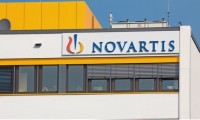-
Novartis Inks Potential $1.3B Contract with Korean Biotech for Small Molecule
- Source: drugdu
- 107
- November 9, 2023
-
Novartis Wins FDA Approval for Intravenous Cosentyx Formulation
- Source: drugdu
- 176
- October 11, 2023
-
FDA Approves Novartis’ New Rheumatic Disease Treatment
- Source: drugdu
- 110
- October 11, 2023
-
Novartis Launches Sandoz Spinoff, Creating Independent Company
- Source: drugdu
- 206
- October 7, 2023
-
Novartis’ Lutathera Clears Phase III as Frontline Treatment for Rare Neuroendocrine Cancer
- Source: drugdu
- 135
- September 28, 2023
-
Novartis Returns Cancer Asset Tislelizumab to BeiGene
- Source: drugdu
- 115
- September 21, 2023
-
Novartis Shareholders Approve Sandoz Spin-Off as Product Plans Increase
- Source: drugdu
- 126
- September 19, 2023
-
Bausch + Lomb seeks funding for $1.75B eye drop acquisition from Novartis
- Source: drugdu
- 123
- September 14, 2023
-
Novartis Confirms Sandoz Spin-Off Plans, Sets Oct. 4 Completion Date
- Source: drugdu
- 106
- September 7, 2023
-
CMS
- Source: drugdu
- 92
- August 31, 2023
your submission has already been received.
OK
Subscribe
Please enter a valid Email address!
Submit
The most relevant industry news & insight will be sent to you every two weeks.













